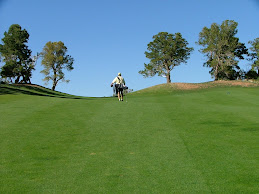 If you are a die-hard golfer, chances are you are obsessed with swing mechanics, always trying to find that one swing key to gain distance and narrow the shot pattern. So if you are in this category, it is likely that you have encountered Homer Kelley's monumental work The Golfing Machine. Kelley's ground breaking and eccentric study of the golf swing became cult-like in the world of golf instruction.
If you are a die-hard golfer, chances are you are obsessed with swing mechanics, always trying to find that one swing key to gain distance and narrow the shot pattern. So if you are in this category, it is likely that you have encountered Homer Kelley's monumental work The Golfing Machine. Kelley's ground breaking and eccentric study of the golf swing became cult-like in the world of golf instruction.But what would drive a man to spend virtually his entire life in the pursuit of solving the conundrum of the golf swing? The answer lies in the explanation of how a man could play golf for the first time and score 116 and then six months later with no play or practice in between shoot a 77. Kelley's lifelong passion became the 39 stroke difference between those two scores.
Scott Gummer has taken a sensitive and judicious examination of the man and his work in an effort to help us appreciate the genius behind the most comprehensive study of the golf swing. The Golfing Machine is slightly more technical than the NASA Flight Manual but in Kelley's mind all the technicalities were necessary to completely dissect the golf swing. Yet, Gummer does not attempt to explain The Golfing Machine to us but rather reveal the man. He accomplishes this unmistakably. You will come away with a much more acute understanding of how one man, a non-golfer, could accomplish such a task.
Gummer also gives us insight into the book itself which took on a life of its own. Kelley labored for over twenty years before he published the book. When he did, the seeds of The Golfing Machine grew slowly. But Kelley persisted and finally found a teaching disciple in Ben Doyle and eventually playing disciple in Bobby Clampett. Gummer relates this life to us throughout the second part of the book.
If you are a golf swing aficionado, and especially if you are fascinated by The Golfing Machine, Homer Kelley's Golfing Machine is an absolute must read. It gives us greater awareness into the mystery we know as the golf swing.



